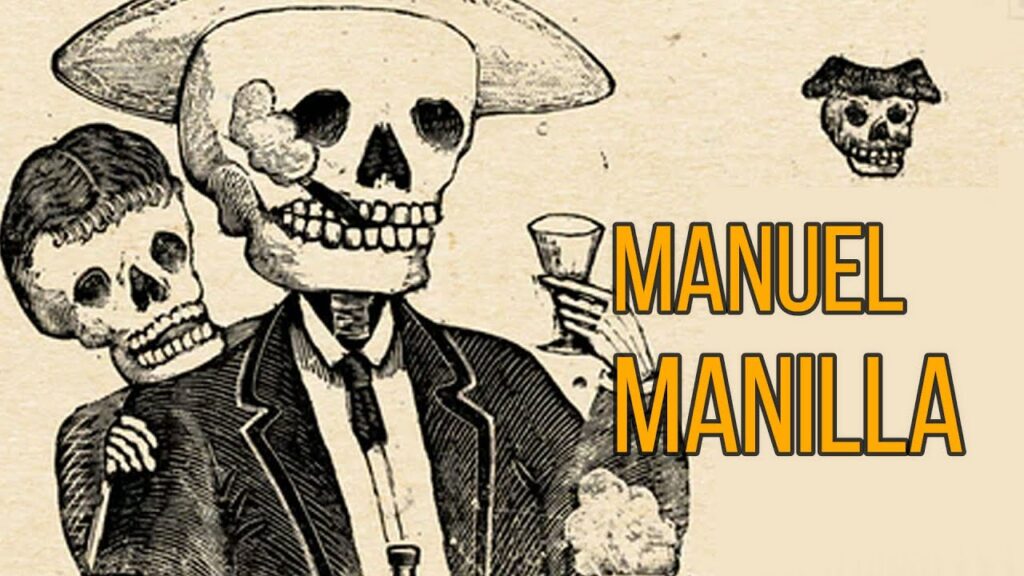Exploring the Historic Center of Mexico City
Wandering through the bustling streets of the Historic Center of Mexico City, also known as “Centro Histórico,” is like stepping into a living, breathing museum where the past and present coexist. The heart of this vibrant district is the Zócalo, officially known as Plaza de la Constitución. One of the largest city squares in the world, the Zócalo has been a gathering place since Aztec times and continues to be a hub for cultural events and political gatherings. Surrounded by historic buildings, it’s a testament to the city’s layered history.
The majestic Mexico City Metropolitan Cathedral, an architectural masterpiece with a blend of Renaissance, Baroque, and Neoclassical styles, dominates the north side of the Zócalo. This massive structure took nearly three centuries to complete and offers insight into the religious fervor of colonial Mexico. Visitors can explore its ornate chapels, climb the bell towers for spectacular views, or delve below to see the ancient Aztec ruins.
Just a stone’s throw from the Zócalo is the ancient Aztec temple, Templo Mayor. Discovered only a few decades ago, the temple’s remnants are an archaeological wonder. The onsite museum showcases artifacts retrieved from the site and offers a narrative of the rich and sometimes tumultuous history of the Aztecs. Walking through the ruins, one can almost hear the echoes of the once-great empire that stood in this very place.
To the east of the Zócalo lies the Palacio Nacional, a grand building adorned with Diego Rivera’s famous murals depicting Mexico’s colorful history from the Aztec era to the Mexican Revolution. These vibrant frescoes are essential for understanding Mexico’s national identity and are a must-see for any history enthusiast. The palace is not only a feast for the eyes but also an active government building, symbolizing the continuity of Mexico’s political story.
No visit to the Historic Center would be complete without strolling through its charming side streets, home to a wide variety of shops and traditional eateries. One can find everything from handcrafted souvenirs to some of the city’s best tacos and tamales. Indulge in the local cuisine and shop for unique artisanal goods, all while soaking in the ambiance of old-world Mexico juxtaposed with the bustle of modern-day life. The Historic Center of Mexico City is truly a cultural treasure that invites adventure at every corner.
The Architectural Marvels of Mexico City’s Historical Heritage
Mexico City, known as the “City of Palaces” for its stunning array of historical buildings, stands as a living museum, showcasing over seven centuries of architectural innovation and cultural fusion. For those who wander through its bustling streets, every corner whispers tales of the past, from the Aztec empire to the Spanish conquest, and into the modern era. The city’s historical center, “Centro Histórico,” is a UNESCO World Heritage site, brimming with architectural landmarks that are not just beautiful, but also narrators of the capital’s intricate history.
The heart of Mexico City is undoubtedly the Zocalo, one of the largest city squares in the world, flanked by historical monuments that will leave you awe-struck. The majestic Metropolitan Cathedral, with its amalgamation of baroque, neoclassical, and gothic architectural elements, dominates the skyline. This religious edifice took nearly three centuries to complete and is a testament to the perseverance and artistry of the Mexican people over generations. Just a stone’s throw away, the ancient Aztec ruins of the Templo Mayor remind us of the city’s deep indigenous roots, standing as an irreplaceable link between the present and the pre-Hispanic era.
Beyond these iconic landmarks, Mexico City’s historic district is dotted with a myriad of buildings, each with their own story to tell. The Palacio de Bellas Artes, with its white marbled beauty and distinctive Art Nouveau exterior coupled with an Art Deco interior, is a cultural hub that has witnessed countless operas, ballets, and art exhibitions. Meanwhile, the awe-inspiring Palacio Nacional, with its red tezontle façade and beautifully detailed murals by Diego Rivera, provides an extensive visualization of Mexico’s history. Each building, plaza, and avenue in Mexico City offers a unique opportunity to step back in time and experience the fusion of cultures that have shaped this metropolis into the architectural wonder it is today.
Cultural Experiences in Mexico City’s UNESCO World Heritage Site
Immersing yourself in Mexico City’s vibrant tapestry of history begins in the heart of its UNESCO World Heritage Site: the historic center, or ‘El Centro Histórico’. This location is a treasure trove of rich history dating back to the Aztec empire, encapsulated in iconic structures such as the Templo Mayor. Venture into this ancient Aztec temple to witness the remnants of a bygone civilization, where each stone whispers stories from the past. Cultural enthusiasts can also explore nearby museums brimming with artifacts that paint a vivid picture of Mexico’s storied history.
Step into the grandeur of the past at the Mexico City Metropolitan Cathedral, which dominates the skyline with its ornate architecture. This colossal edifice not only holds religious significance but also stands as a testament to the city’s colonial-era splendor. Its walls and altars, adorned with intricate carvings and gold leaf, are an awe-inspiring sight. Masses and choir performances still echo within its hallowed halls, allowing visitors to experience living history amidst the backdrop of this stunning cathedral.
No exploration of Mexico City’s cultural heritage is complete without immersing oneself in the traditional arts and crafts found in the colorful markets sprawled across the area. La Ciudadela market is a haven for artisanal crafts and folklore. Hand-painted ceramics, handwoven textiles, and vibrant ‘alebrijes’ (fantastical creatures) are just some of the treasures awaiting discovery. Engage with local artisans, who are often present to share the stories and techniques behind their creations, offering a personal touch to the rich tapestry of Mexican cultural expressions.
A Guide to the Historical Landmarks of Mexico City’s Downtown
Mexico City’s downtown, officially known as Centro Histórico, is a treasure trove of rich history with its origins tracing back to the Aztec Empire. As the heart of the capital, this area is not just the political center but also a cultural and historic hub. Here, visitors can take a journey back in time and witness the amazing blend of pre-Hispanic and colonial Spanish architecture. You can almost hear the echoes of the past with each step on its cobblestone streets.
The Zócalo, or Plaza de la Constitución, is one of the largest city squares in the world and a prime starting point for any historical exploration. Once the epicenter of the Aztec city Tenochtitlan, it is now home to the colossal Mexican flag and surrounded by significant edifices including the Metropolitan Cathedral and the National Palace. The square is alive with the hustle and bustle of daily life, filled with street performers, vendors, and numerous cultural events throughout the year.
The Metropolitan Cathedral, located on the north side of the Zócalo, is one of the most impressive and important religious sites in Mexico. As the oldest and largest cathedral in Latin America, it boasts a mixture of architectural styles, from Renaissance to Neo-Classical, due to its long construction period spanning nearly three centuries. The grandeur of its altars and the beauty of its numerous chapels are a testament to the religious devotion and artistic legacy of Mexico.
Just steps away from the Zócalo is the ancient Templo Mayor, a significant Aztec temple that was once the centerpiece of Tenochtitlan. Excavated and partially reconstructed, it offers a unique perspective into the pre-Columbian era, with its relics and ruins that tell tales of the Aztec civilization. The adjoining museum houses incredible artifacts recovered during the excavation, providing deeper insight into ancient Aztec life and culture.
Discovering the Charms of the Historic Center of Mexico City
Mexico City’s historic center, known as “Centro Histórico,” is a cultural and architectural treasure trove that promises adventure at every turn. Walking through its bustling streets, you can almost hear the echoes of the past, from the Aztec Empire to the Spanish Conquest and the eventual rise of modern Mexico. Explorers are welcome to immerse themselves in the rich tapestry of history displayed in the impressive buildings and ancient ruins that stipple the landscape. One such marvel is the grandiose Mexico City Metropolitan Cathedral that dominates the skyline, a testament to the city’s colonial past and a collector of stories spanning centuries.
For those drawn to the allure of ancient civilizations, the Templo Mayor unveils the mysteries of the Aztecs. Excavated and preserved amidst the urban sprawl, this archaeological site and accompanying museum tell the tale of a culture that, despite its disappearance, still profoundly influences Mexican heritage. Just a stone’s throw away, the Palacio Nacional lines the eastern side of the Zocalo—the main square—housing stunning murals by the famous artist Diego Rivera, which beautifully narrate the history of Mexico from pre-Hispanic times to the 20th century.
Amidst this historical pilgrimage, local flavors and scents infuse the air at the vibrant street markets offering a bounty of Mexican crafts and gastronomic delights. La Casa de Azulejos, with its ornate blue and white tiles, stands as a visual feast, now serving as a bustling restaurant where visitors can savor traditional Mexican cuisine beneath an art-filled roof. No visit to the historic center is complete without sampling the region’s culinary specialties, from tamales and tacos al pastor to decadent churros dipped in hot chocolate, each bite is a mosaic of the country’s rich cultural influences.



